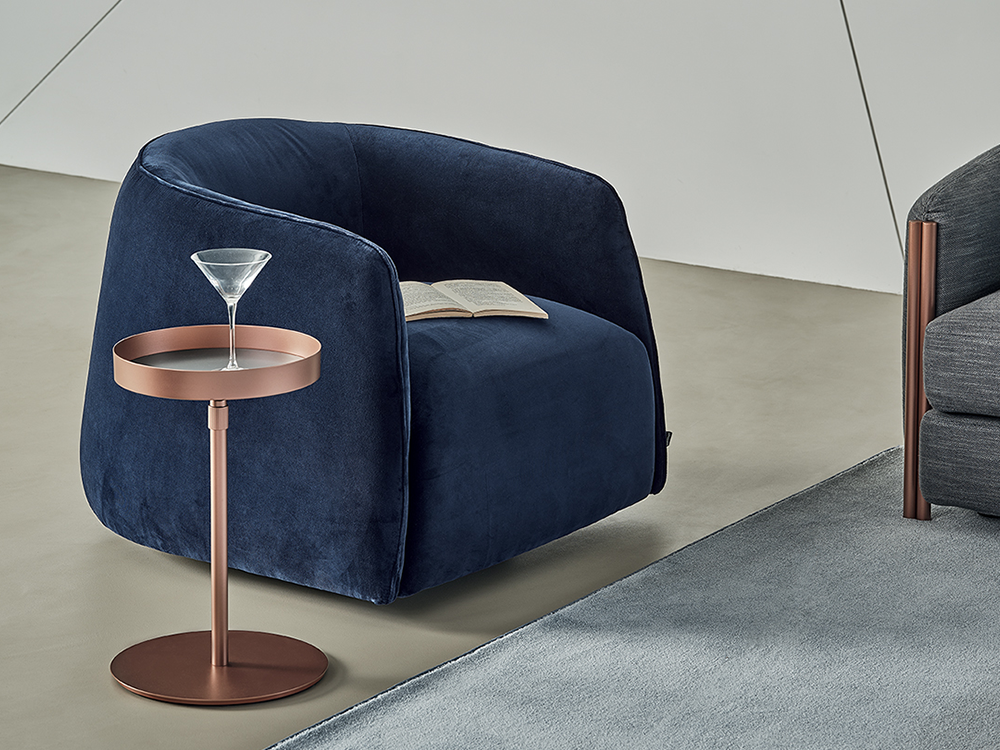The kitchen is one of the most lived-in places in the home, a space to be shared with family and guests during lunches, dinners and informal aperitifs. Therefore, it is important to create a versatile, cosy and comfortable environment, and to choose the most suitable chairs, taking into account the available space, the different usage requirements, but also comfort and design.
The kitchen is one of the most lived-in places in the home, a space to be shared with family and guests during lunches, dinners and informal aperitifs. Therefore, it is important to create a versatile, cosy and comfortable environment, and to choose the most suitable chairs, taking into account the available space, the different usage requirements, but also comfort and design. Finding the right chair is not easy, not least because of the vast number of products on the market. The first thing to do is to distinguish between the dining room and the kitchen proper. Generally speaking, a chair that is designed for the living room (dining room) will not fit the kitchen.
Kitchen furniture: why it is worth starting with the chairs
Carefully assessing the size of the space in which the chairs will be placed is the first, indispensable step. If space is plenty, one can opt for a large table and comfortable seating, perhaps even with armrests. On the contrary, if the space is small, also chairs and table should be tiny. Going into the specifics, one must consider that the minimum size for a person sitting is 50 cm by 60-70 cm. A chair usually has a seat width of 45-55 cm, depth 45-60 cm and is 40-50 cm high from the floor, with a minimum backrest of 38 cm.
The chair must always be chosen according to the size of the table, especially in relation to height: a table is on average 72-75 cm high, even 80-85 cm if it is an antique one. For a chair to be considered right for a table, the distance between its seat and the lower edge of the table must be greater than 30 cm. In this way, the legs of the diners will be able to move easily and overlap. Pay attention also to the ease of storing and sliding the chair under the table, so that the table legs do not get stuck with those of the chair.
Kitchen chairs: tips and curiosities
When furnishing the kitchen, one must focus on creating a comfortable environment that returns cosyness, but without neglecting functionality. In this respect, the material the chairs are made of is very relevant and the possibilities are endless: wood, steel, aluminium, polycarbonate or polypropylene, leather, faux leather, fabric, wood fibre, plexiglass, resin, wicker or rattan. Hygienic, practical and easy-to-clean products such as plastic, stain-resistant fabrics, wood or metal (adding a cushion to soften the seat) tend to be preferred . One of the best tips to follow is to go for a mix of natural fibres, e.g. linen, and man-made fibres such as polyester. In this way, strength, pleasantness and ease of cleaningare combined.
In aesthetic terms, one can choose stylistic continuity with the table or total dissonance. The first option involves purchasing chairs in colours and materials that match those of the table or, even better, those of the kitchen top. Even a single graphic or chromatic detail recalling other kitchen furniture elements is enough to create homogeneity and give character to one of the most important rooms in the home.
If, on the other hand, you go for the shock effect (stylistic dissonance), you have to completely decouple the choice of table from the choice of chairs. For example, ultra-contemporary chairs under a super-classic table.
Which chairs are perfect for a modern kitchen
To highlight the most suitable models for a modern kitchen, let’s start by clarifying those that should definitely not be recommended.
No to chairs with a backrest that is too high, especially in an environment as lively and dynamic as the kitchen.
No to chairs that are too heavy. They will be moved frequently and must be light and manageable.
No to chairs that are actually armchairs and perhaps even have a sloping backrest.
No light-coloured chairs, which are more exposed to stains. Modern kitchens are daring, offering bold, strong, sometimes even fluorescent colours.
No to chairs with armrests. They can bump into the table and above all do not respect the essential, geometric, clean lines of contemporary kitchens.
Modern kitchens often feature glass, almost futuristic tables. Combined with these tables, resin chairs workparticularly well. While transparent methacrylate chairs are an excellent suggestion to give modernity to a dark wood table.











